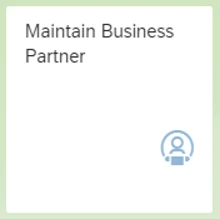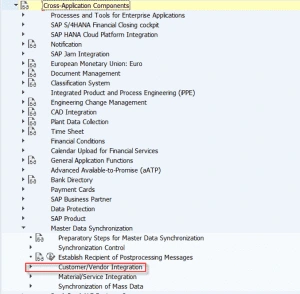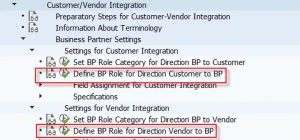An Intro to Business Partners And CVI in S/4HANA Conversions
An Intro to Business Partners And CVI in S/4HANA Conversions.
SAP projects can be painful. We all know that, from long hard years of experience. So when a new SAP platform is on the horizon and new concepts become mandatory, before you can convert your existing platform to the new one, it is easy to see why SAP functional analysts become frustrated. Additionally, SAP have now made it clear that the pendulum has swung from greenfield S/4HANA implementations to system conversions (traditionally known as “brownfield” implementations). This means it is particularly important to cut through the fog and get to a clear understanding of what needs to happen to smooth your path from SAP ECC6.0 to SAP S/4HANA. One such innovation, which is mandatory in S/4HANA is the use of business partners to replace the master data objects of customer and vendor. As their use in SAP is mandatory, the old transactions used to maintain vendors and customers have now been deprecated, replaced by one transaction: BP; or for Fiori users, the app “Maintain Business Partner”.

This blog is not meant to show you how to configure business partners and customer-vendor integration (lord knows there are enough blogs out there on that subject – see the end of this blog for links to further reading). Rather, I would like to introduce the concepts to you in order that some of the mystery around this topic can be explained.
What is a business partner?
help.sap.com defines a business partner (BP) as: “A person, organization, group of persons, or group of organizations in which a company has a business interest. You use this business object for a variety of business transactions. You create and manage centrally your business partners (BPs) and the roles they assume for your company.” For the purposes of this blog, we will deal with business partners as customers and vendors. With the BP approach, one partner can be a customer as well as a vendor, using the same data object number. This is controlled through BP roles, which are also freely configurable.

Traditional SAP solutions for customers and vendors write out entries to tables such as KNA1, KNVV and LFA1. These tables are still absolutely central to the sales and purchasing processes and as such, in SAP S/4HANA, they are still active and populated, but they are populated by the creation and amendments made to business partners, which have their own set of tables, prefixed BUT*. To populate the traditional tables, your BP configuration must define how the BUT* tables push data out to the existing customer and vendor tables. This is controlled in Customer-Vendor-Integration (CVI). More of that later.
Why does SAP use business partners now?
It is true that having more than one data object representing the same party makes for redundant data, and also does not give a full overview of the relationship the business holds with that party. For example, if a partner was both a customer and a vendor, and had two data objects (one for each role), then it would be very difficult to get the total net spend for that partner without carrying out a mapping exercise. Extrapolate up to hundreds of thousands of partners and you quickly have a data headache on your hands. Furthermore, SAP CRM already uses the concept of business partners and therefore mandating their use in S/4HANA makes integration with CRM much easier. There is also additional functionality available with BPs, which was not available in the old customer and vendor separated objects. For example, any number of external ID numbers can be freely configured and assigned to a business partner – legacy system IDs, EORI numbers and customs office numbers for example.

What is Customer-Vendor Integration (CVI)?
CVI is SAP’s way of converting business partner data into customer and vendor master data, and vice versa. The conversion itself is done automatically as soon as you save a new or amended BP – the relevant data is written out to the customer and vendor master data tables (e.g. KNA1, LFA1). The nature of this automatic conversion is defined in the configuration for CVI.

What do I need to do in my ECC6.0 system to prepare for CVI for my S/4HANA conversion?
We have already discussed why we need to populate the traditional SAP tables for customers and vendors when BPs are created or amended, but why would you need to do this the other way around (i.e. populate the BP tables from the customer and vendor tables)? The answer to this question lies in the definition of your SAP conversion approach from ECC6.0 to S/4HANA. Let’s start with the fact that the BP approach is mandatory in S/4HANA. Furthermore, the concept of BPs is not new to SAP in S/4HANA – the approach exists as an option and has done for many years. As BPs are mandatory, this means that all your customer and vendor master data residing in ECC6.0 must be converted to BPs in S/4HANA. To make this approach easier, SAP have allowed the CVI settings both ways. In other words, before you start your system conversion activities, a key part of the “Preparation” phase is to activate CVI in your ECC6.0, in the direction Customer and Vendor to BP. This means that the customer/vendor is the leading data object.

By doing this, every customer or vendor you create will populate the BP tables. This will make your data conversion seamless. Of course, it is not as straightforward as that: there are other considerations, such as number ranges, archiving of redundant data and mass synchronisation of existing customer/vendor master data. A chronological checklist of your ECC6.0 work before conversion is as follows:
- Archive redundant master data.
- Activate business functions.
- Integrate custom enhancements.
- Implement check reports (see below section for these standard tools).
- Configure CVI as customer/vendor to BP.
- Implement customer specific mapping, if necessary.
- Assign number ranges.
- Run pre-conversion checks.
- Synchronisation phase in ECC6.0 – run report MDS_LOAD_COCKPIT – this converts all existing customers, vendors and contacts into BPs in ECC6.0.
- Users should continue to use the customer and vendor transactions (transaction BP should be locked). Continuous monitoring of the customer/vendor to BP process should be carried out in ECC6.0 using transaction MDS_PPO2.
All the above steps are covered in detail in the SAP CVI Cookbook (the link can be located in “Further Details” below).
What standard tools do I have available to help me?
SAP has put in some hard work here, delivering some really useful conversion tools. To implement them, there is a whole suite of SAP notes to be used. Please refer to the SAP CVI Cookbook online. The key tools available are:
- Check and resolve pre-conversion customising settings – report CVI_UPGRADE_CHECK_RESOLVE.
- Pre-conversion master data checks – report CVI_MIGRATION_PRECHK (transaction CVI_PRECHK).
What does the conversion to SAP S/4HANA look like?
It is important to reiterate that the conversion to BPs must take place in ECC6.0 before the conversion into S/4HANA. The S/4HANA conversion will fail if this is not carried out. The good news is that the BP conversion is not part of the S/4HANA conversion downtime, so is not in the critical path for the conversion effort. The report MDS_LOAD_COCKPIT is again used to load the BPs in to S/4HANA. After the BPs are loaded, the following steps should occur in this order in the new S/4HANA system:
- Activate BP to customer/vendor CVI, to ensure all newly created BPs are activated in the customer and vendor tables. This means that the BP becomes the leading object.
- Adjust the number range definition so that the customers/vendors are created with the same number ranges as the BPs.
- Test the process by creating a new BP manually.
Summary of conversion flow
The SAP recommendation for conversion activities is to run the full end to end conversion in a sandbox first. After running, use the SAP delivered tools to analyse and correct the data, then repeat in a new sandbox. Once errors are eliminated, run through the standard DEV>QA>PROD process. The summarised conversion steps are:
| Step | System |
| CVI implementation | ECC6.0 |
| Activate customer/vendor to BP | ECC6.0 |
| Convert existing customers/vendors to BPs | ECC6.0 |
| Continue using XD01/XK01 etc. (lock tcode BP) | ECC6.0 |
| Monitor automated BP creation using MDS_PPO2 | ECC6.0 |
| Convert to S/4HANA | S/4HANA |
| Post conversion activities – activate BP to customer/vendor; adjust number range; test | S/4HANA |
Further information
A useful blog by SAP on the subject of the S/4HANA business partner approach can be found here.
Further reading on the subject can be found in this SAP Press book.
The most important and useful link is to SAP’s own CVI cookbook, which gives you step by step instructions.
Author: Jon Simmonds, Senior IT Architect